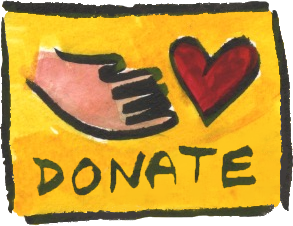Sitting and Turning with Length (26m)
Part of our Getting Oriented collection. Our free collection called Essential Lessons for Easier Sitting is closely related.
Learn how to make sitting more comfortable as you improve turning and twisting. Access and enjoy your full length in motion even while seated, including head and eyes, pelvis and knees, and everything in between.
The audio player for this free lesson is below. First, have you noticed how most free websites are funded by annoying internet ads, but this one isn't?
Skipping the ads doesn't mean we don't have costs. Our annual budget is typically over $25,000 in direct expenses for technology and part-time staff, in addition to Nick’s 20 hours per week.
How is The FP ad-free? Our 50+ free lessons are a crowd-funded labor of love!
However, only a tiny percentage of our 5,000 monthly visitors donate to support our vision. Please join the Project and help us share Feldenkrais as widely as possible!
Patron benefits include 90+ more lessons for $21/month or less, about the cost of a single in-person class!
Or simply support the free lessons you love: donate as little as $3 and we'll thank you with Member benefits .
Before you begin read this for practical tips and your responsibilities, and check out Comfort & Configuration below.
Recorded live in a Feldenkrais Awareness Through Movement (ATM) class, this lesson is copyright Nick Strauss-Klein, for personal use only.
Browser/device size and audio player
Tech tip: On mobile or tablet? Once you start playing the audio, your device’s native playback controls should work well.
Tip – Lesson names
What’s in a lesson title? Lessons are about an hour unless a shorter duration is shown in the title. Thanks to our donors they’re freely offered unless marked “Patrons” – those are how we thank our Patron-level donors.
Tip 5 – Discomfort
Study tip: If a configuration or movement causes any increase in discomfort, or you feel you just don’t want to do it, don’t! Make it smaller and slower, adapt it, or rest and imagine.
Tip 3 – Head Support
Study tip: It helps to have a large bath towel nearby when you start a lesson. You can fold it differently for comfortable head support in any configuration.
Tip – Technical Difficulties
Tech tip: If you have any trouble with the audio player, reboot your browser. That solves most issues. If not, try another browser or contact us.
Tip 1 – Interrupted?
Study tip: Interrupted or don’t have enough time? You can return to the lesson later today or tomorrow. Read how best to continue your learning on our FAQ page.
Tip – What’s New
Community tip: See what Nick and other Felden-fans are interested in right now. Check out What’s New at the bottom of our homepage for recent blog posts and listener comments.
Tip – Complete the Movement
Study tip: Complete one movement before beginning the next. You’ll improve faster if there’s enough time between movements that you feel fully at rest.
Tip 2 – Social Sharing
Project tip: Try the social buttons below. Please help us to achieve our vision: spreading the life-changing benefits of Feldenkrais study as widely as possible!
Tip – skip a lesson
Study tip: If you can’t find a comfortable way to do the initial movements or configuration of a lesson, it’s ok to skip it for now and go on to another lesson.
Tip – Rewinding
Study tip: Many instructions are repeated. If you get a little lost, rest and listen. You’ll often find your way. Or use the rewind button on the page or your mobile device.
Tip – what to wear
Study tip: Wear loose, comfortable clothes that are warm enough for quiet movement. Remove or avoid anything restrictive like belts or glasses.
Tip – Directions are Relative
Study tip: Directions are always relative to your body. For example, if you’re lying on your back “up” is toward your head, and “forward” is toward the ceiling.
Tip – Comments
Project tip: Leave a lesson comment below! It’s a great way to give feedback or ask a question, and it helps google find us so we can achieve The Feldenkrais Project’s vision!
Tip – Pause the recording
Study tip: If you’re really enjoying a movement and want to explore longer, or you just need a break for a while, pause the recording!
Tip 4 – Padding
Study tip: Comfort first! Carpeted floors usually work well, but it’s great to have an extra mat or blanket nearby in case you need a softer surface in some configurations.
Tip – Join!
Join the Project! Members and Patrons see streamlined lesson pages, and can access My Journey (the and above), and the Related Lessons tab below.
Browser/device size and audio player
Tech tip: On mobile or tablet? Once you start playing the audio, your device’s native playback controls should work well.
Tip – Lesson names
What’s in a lesson title? Lessons are about an hour unless a shorter duration is shown in the title. Thanks to our donors they’re freely offered unless marked “Patrons” – those are how we thank our Patron-level donors.
- Comfort & Configuration
- Curiosities
- Context
- Related Lessons
- Source
- Download
- Alternate Version
Patrons can listen to Getting Oriented tracks 5-7 (the Access Your Axis talk and lessons) without interruption as a 70-minute workshop recording.
This lesson is found in Getting Oriented, our introductory collection of Feldenkrais basics for newcomers (and longtimers looking for a “tune-up”).
Our free collection called Essential Lessons for Easier Sitting is also great for Feldenkrais newcomers looking to build healthier sitting habits.
To learn more about the planes of movement mentioned in this lesson and some healthy guidelines for sitting, check out About Dynamic Sitting.
In lessons 3 and 4 (and their intro talk) I make reference to “celestial gravity.” I’m indebted to Feldenkrais Trainer and master Zen teacher Russell Delman for this beautiful image, which I was introduced to in his Embodied Life II collection of lessons, available for public purchase. Terrestrial gravity is the center-of-the-earth gravity we think of usually. Celestial gravity refers to the many aspects of being human that lift us up, including our evolutionary journey rising away from ground-level living.
Finding ourselves more and more often at our maximum skeletal height, elegantly suspended between terrestrial and celestial gravity, has a profound influence on our joy and comfort, our ease of movement, and the effectiveness with which we function.
Claiming our full graceful length more often is one of the many goals of Feldenkrais study.
You’ll need a simple, level, non-rolling chair, with a firm or lightly upholstered surface. Find a chair that’s an appropriate height for you, so that when you’re seated at the front of the chair your hip are slightly above the height of your knees. Knees are bent simply, at least hip-width apart, and your feet stand on the ground underneath them.
If your feet don’t reach the floor easily, stack something firm under them, or under your bottom if your knees are higher than your hips.
If you like what you heard...
- Join the Project! You’ll support our free lessons while enjoying awesome donor benefits
- Sign up for our twice monthly newsletter featuring free lessons and new lessons
- Spread the word: Simply copy this page's web address to share this free lesson
Got a question for Nick, or a thought about this lesson?
Use the comments section below! Public comments build our community and help search engines find us.





I find it very useful when keeping the eyes still and moving the body around to take off my glasses. We glasses wearers are trained to limit our gaze to where it can focus through the lens, but of course the eyeball can move a great deal farther than that. Because I’m very nearsighted, I place a bright object about 10 feet in front of me at eye level, so I can focus on that even though I can’t see any details.
Those are some very helpful suggestions thank you Joan. I wear glasses as well and in the earlier lessons I remembered to take them off but did not this time. I will try it again without the glasses
Hi Nick, these short lessons are such good explorations and reminders! I hurt my back a couple of weeks ago with yoga, and the re-organization of my bones is invaluable! thank you so much for helping me to get better.
Fantastic – thanks for letting me know! I agree: short lessons can be a lifesaver. Soon you’ll find yourself playing with little bits of these seated lessons spontaneously while you’re doing regular life chair activities!
I’ve just begun this course of lessons and the difference in my posture and suppleness is already palpable. As a singer I have especially noticed the benefit of a constant awareness of the relaxed breath – it’s been quite revelatory! Thank you.
That was extremely interesting especially the last standing part because it had been quite painful in the last lesson when I did the initial twist, and my right knee complained. This time when I was standing and feeling the length and curve I could move much more freely and turn farther. When we thought ourselves heavy my knee complained loudly again! That is a very useful tool Thank you
Nick, this is amazing stuff! the instruction toward the end when you suggest we turn, but then look down to the pelvis and twist the pelvis (?) and then arch back up….this is the only instruction you’ve ever suggested that im not sure I follow how you mean….any help?
Sure! In the middle, the moment when you’re not turned at all, you are in a pretty fully-flexed position: pelvis tilted back, back rounded, head low. Then as you turn you unfold into arching, and looking up. Does that explain it? Feel free to ask more questions.